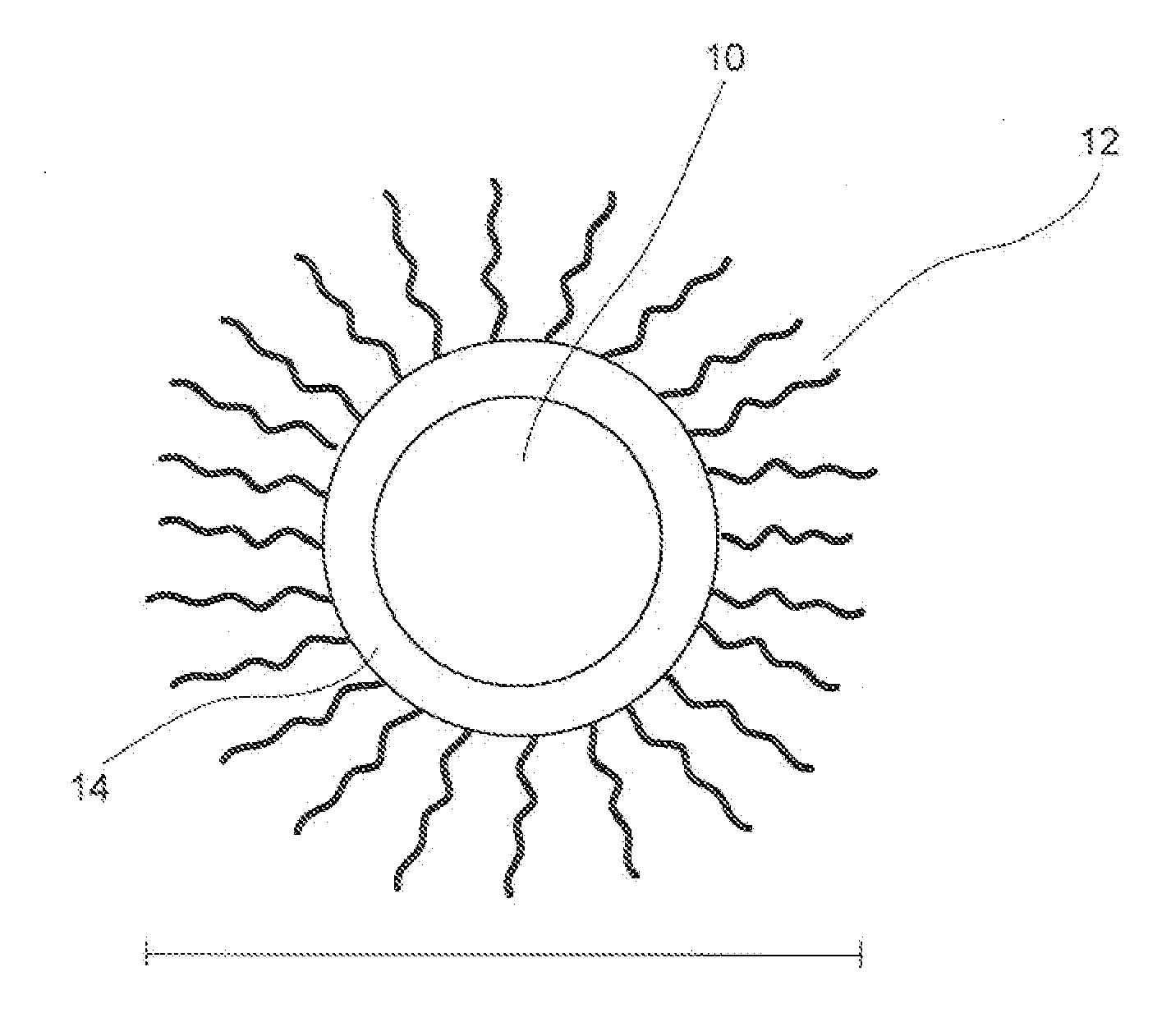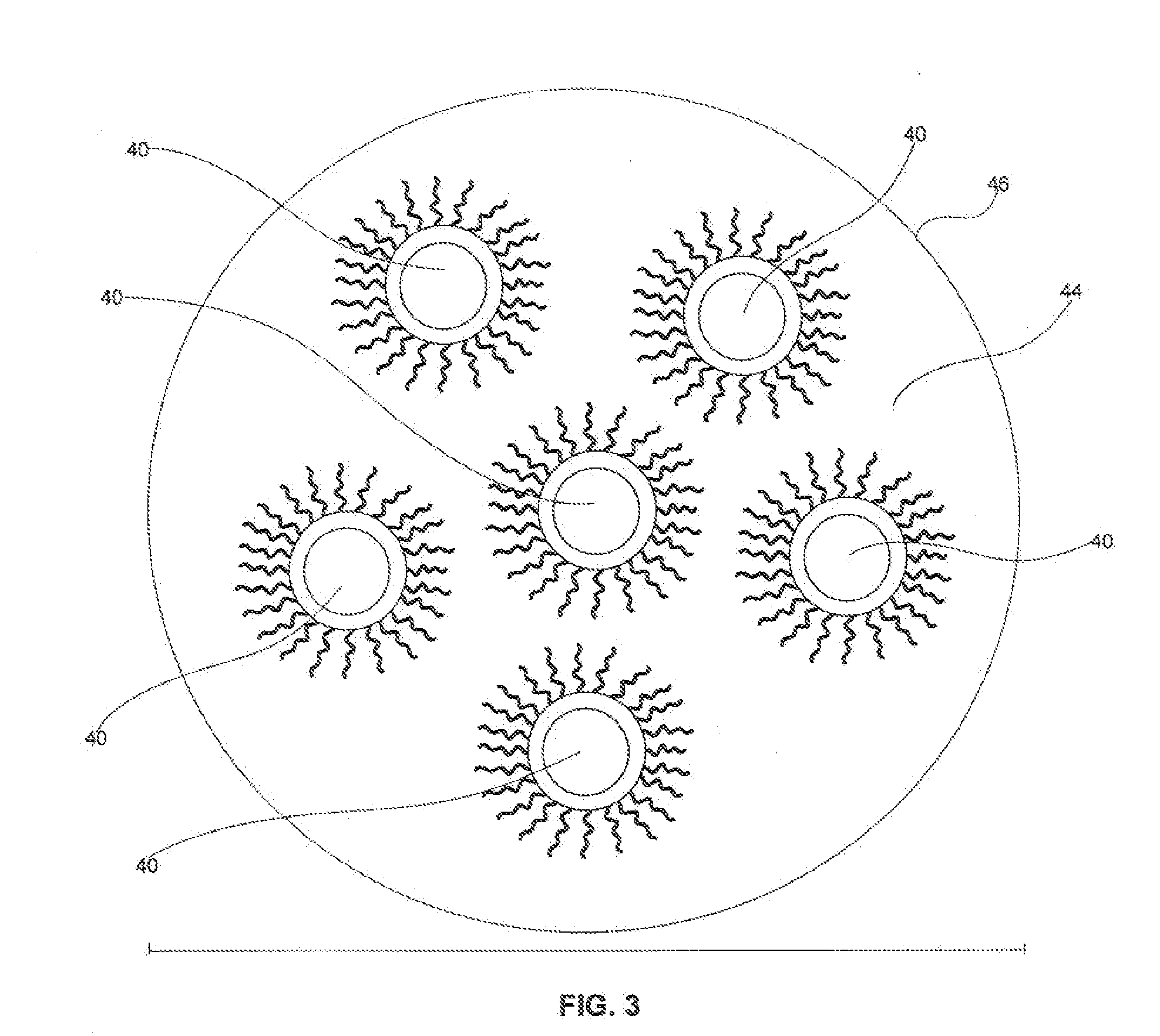Colloidal-crystal quantum dots as tracers in underground formations
a technology of colloidal crystal and underground formation, which is applied in the field of use, can solve the problems of significant impact on the overall cost of the project and ultimately the cost of power production, and the relative small section of the open-hole section of the subterranean formation is actually fractured
- Summary
- Abstract
- Description
- Claims
- Application Information
AI Technical Summary
Problems solved by technology
Method used
Image
Examples
example 1
Design and Synthesis of Nonsorbing Quantum Dot Tracers
[0041]At least three distinct quantum dot tracers that fluoresce in the visible (400-750 nm), one that fluoresces in the near IR (800-950 nm), and one that fluoresces at longer IR wavelengths (950-2000 nm) are synthesized in sufficient quantity for subsequent testing. Four different compositions of colloidal nanocrystals (all with sizes varying from about 1 to 10 nm in diameter) are used to cover the targeted emission wavelength range from 450 to 1500 nm: cadmium selenide (CdSe; 450-650 nm), cadmium telluride (CdTe; 600-750 nm) and lead sulfide and selenide (PbS and PbSe; 750-2000 nm).
[0042]Semiconductor colloidal quantum dots (or nanocrystals) can be synthesized by relatively simple organometallic colloidal chemistry. A low-temperature (50-130° C.) organometallic nucleation and crystallization-based synthesis route for the fabrication of high-quality colloidal nanocrystals with narrow size distribution and tunable (size-dependen...
example 2
Surface-Modified Quantum Dots
[0045]The surface chemistry of highly-luminescent core-shell quantum dots can be tuned to give optimized interaction with the sensing / tracing environment. Two approaches can be used:[0046]Fabrication of initially hydrophobic quantum dots using a low-temperature method and rendering them water-soluble by surface-ligand exchange (amine, carboxyl, or thiol-functionalized ligands).[0047]Modification of the low-temperature synthesis route for the direct synthesis of hydrophilic nanocrystals with water-soluble surface ligands (citrate or hydroxyl-functionalized ligands).
[0048]While the latter requires less fabrication steps, the first strategy is better established and therefore will allow faster product availability with better control of size and properties of the synthesized quantum dot tracers. A schematic of the structure of water-soluble quantum tracers is shown in FIG. 1.
example 3
Fabrication of Temperature and Corrosion-Stable Nonsorbing Quantum Dot Tracers
[0049]Water-soluble core-shell nanocrystals are immersed in a solution containing amino or thiol-functionalized alkoxysilanes, which serve as the molecular precursor for the glassy silica layer. Formation of a continuous silica film is then induced by chemically cross-linking the alkoxysilane precursor and the thickness of the protective glassy layer is controlled by the length of reaction. The thickness can be about 2 nm-5 nm, resulting in total nanocrystal sizes between 5 nm and 25 nm. While this should be sufficient to protect the enclosed nanoparticles from corrosion and temperature, fine-tuning of the layer-thickness can be done in order to provide the desired temperature stability. The temperature stability of the quantum dots can be evaluated and tested using batch autoclave reactors, each tracer being screened for thermal stability under conditions of temperature, pressure and chemistry that simula...
PUM
 Login to View More
Login to View More Abstract
Description
Claims
Application Information
 Login to View More
Login to View More - R&D
- Intellectual Property
- Life Sciences
- Materials
- Tech Scout
- Unparalleled Data Quality
- Higher Quality Content
- 60% Fewer Hallucinations
Browse by: Latest US Patents, China's latest patents, Technical Efficacy Thesaurus, Application Domain, Technology Topic, Popular Technical Reports.
© 2025 PatSnap. All rights reserved.Legal|Privacy policy|Modern Slavery Act Transparency Statement|Sitemap|About US| Contact US: help@patsnap.com



